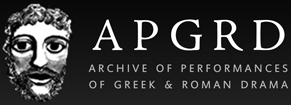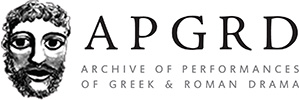Agamemnon, a performance history is the APGRD's second interactive/multimedia eBook. The eBook draws on a unique collection of archival material and research at the APGRD and beyond; it uses images, film, bespoke interviews with creative practitioners and academics, and digital objects to explore the reception history of Aeschylus' tragedy.
DOWNLOAD the iBook - for Apple devices
The iBook version is available for free on Apple Books either as a full-length book, or three quicker-to-download instalments comprised of two related chapters from the full version. Use the following links to download them now:
- Agamemnon, a performance history (full version)
- Agamemnon, a performance history: Beginnings & Whose Play?
- Agamemnon, a performance history: Homecoming & Lyric
- Agamemnon, a performance history: Endings & Iconography
EPUB versions for devices other than Apple will follow
Medea
See Medea, a performance history for our first interactive/multimedia ebook.
Your Feedback
Love our ebooks? Think they could be improved? Have you used either of them for teaching, research or creative work, or read them for pleasure? We would love to hear from you! If you have any feedback we would be grateful if you could take the time to complete a short survey (anonymous).


